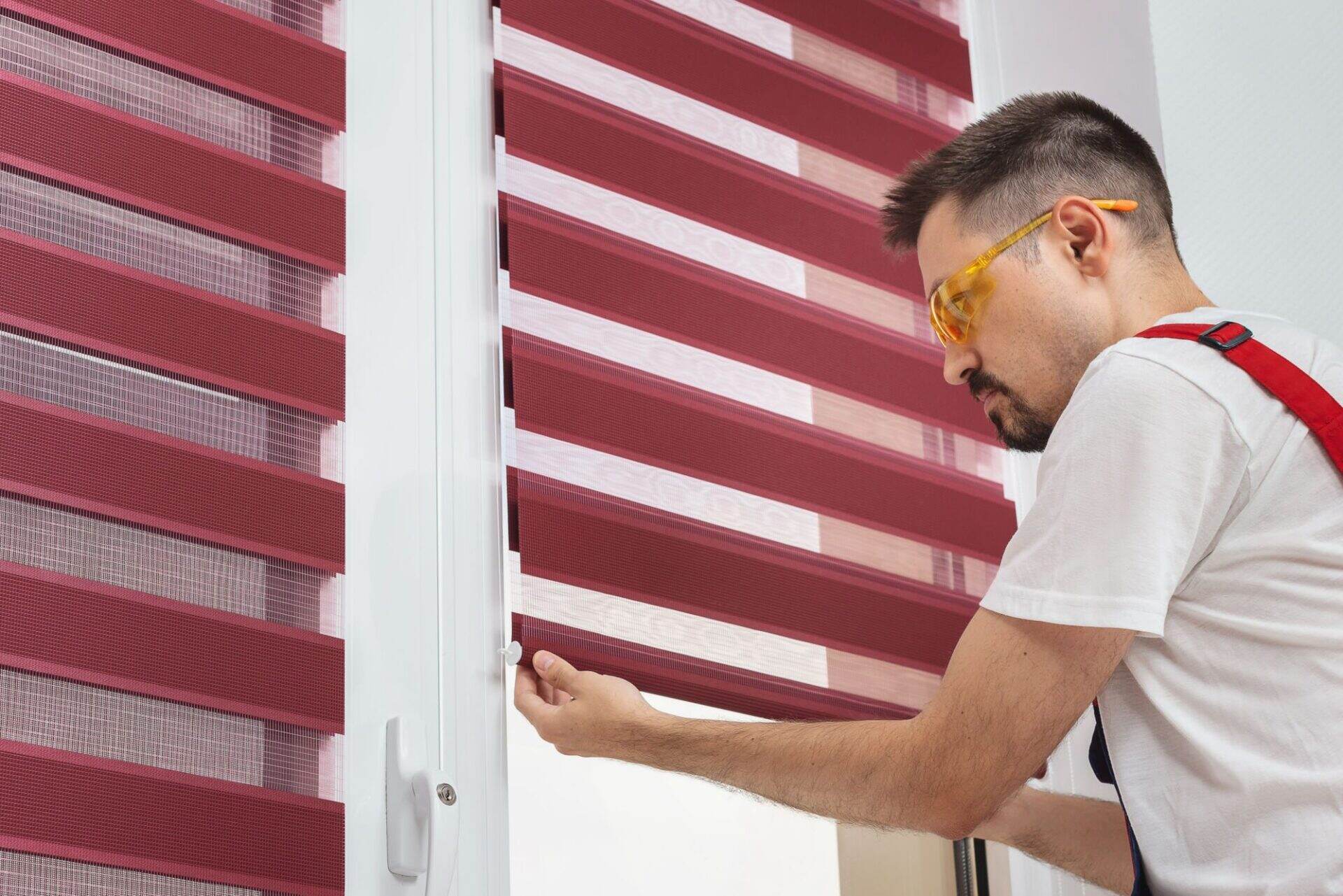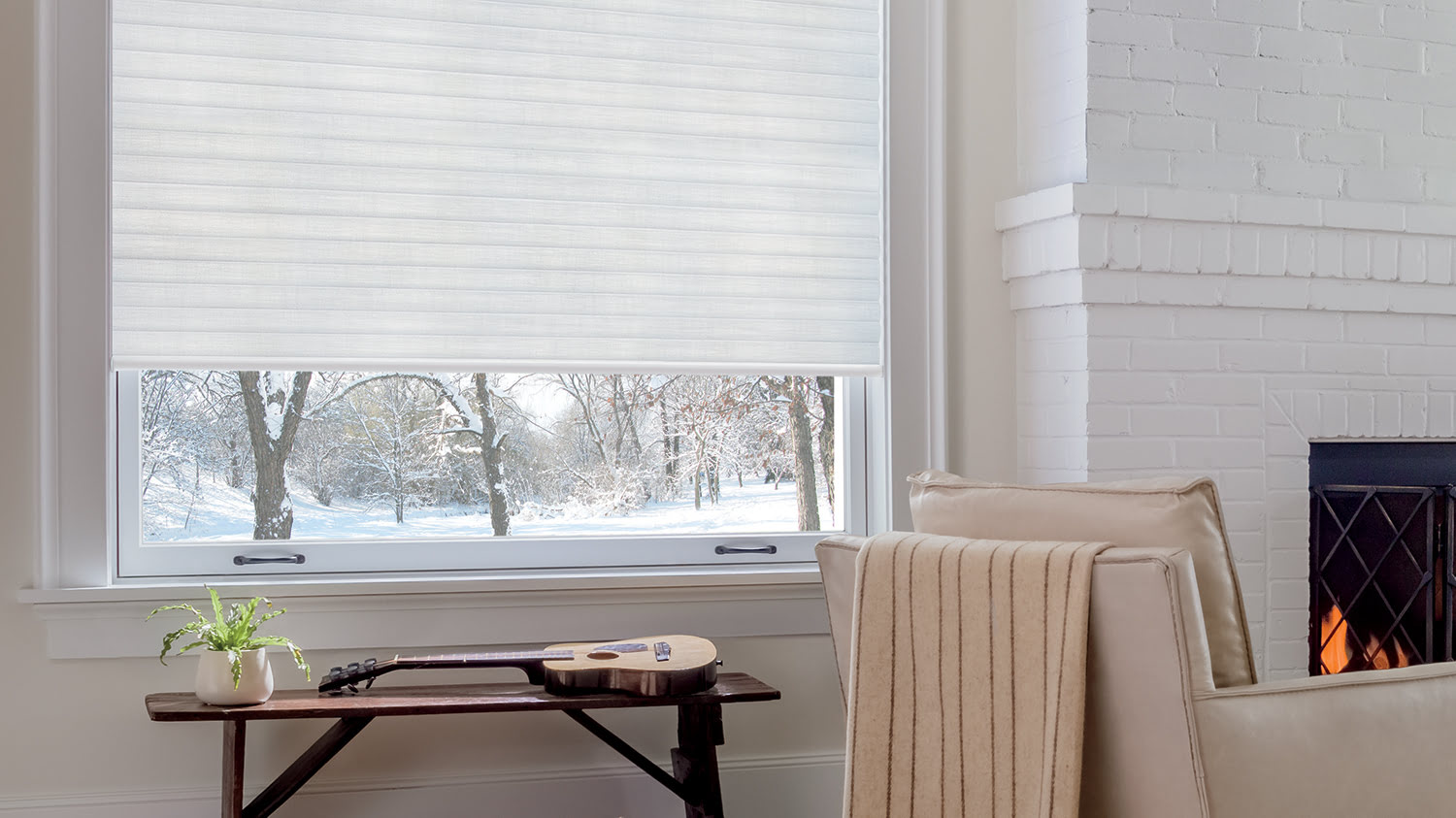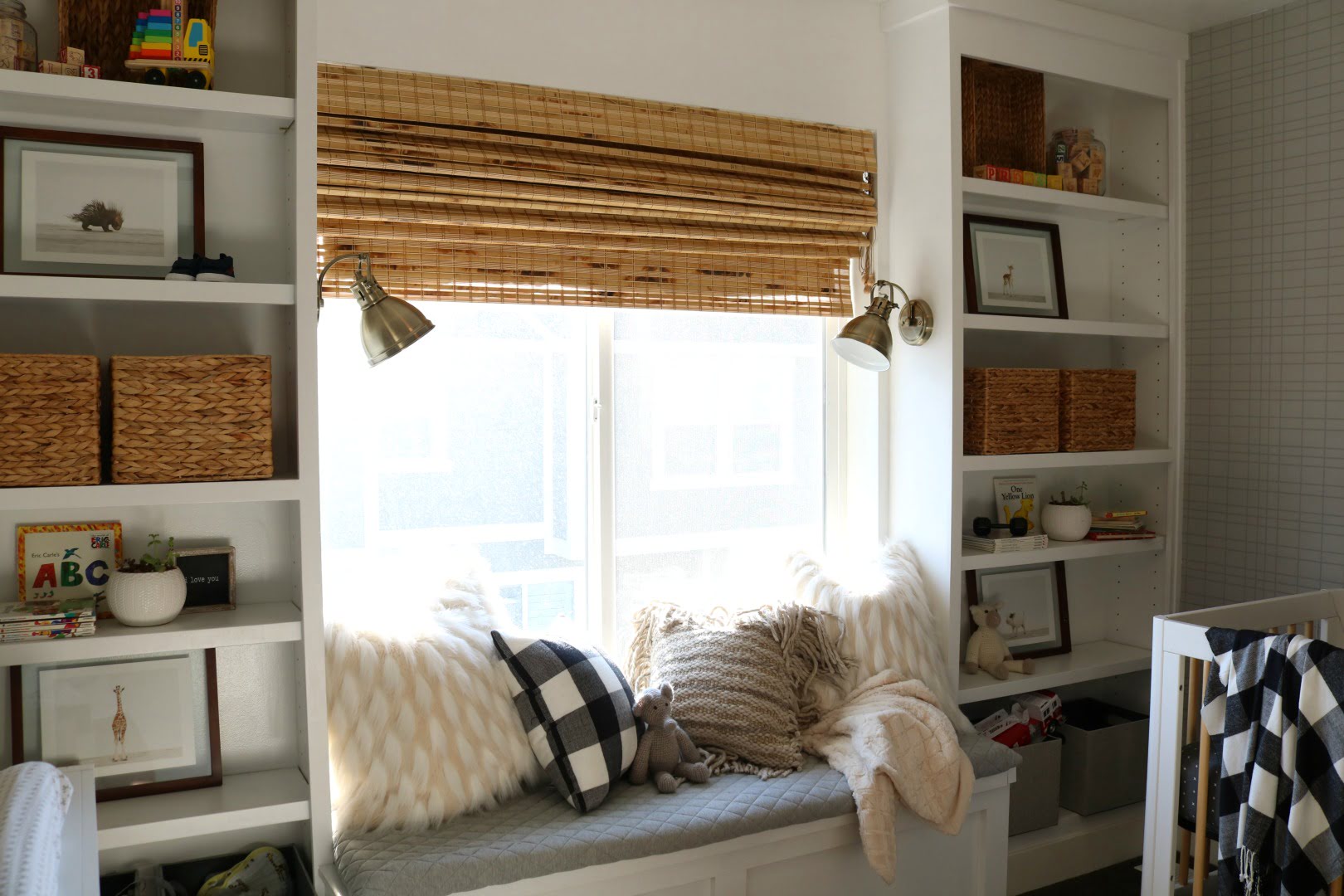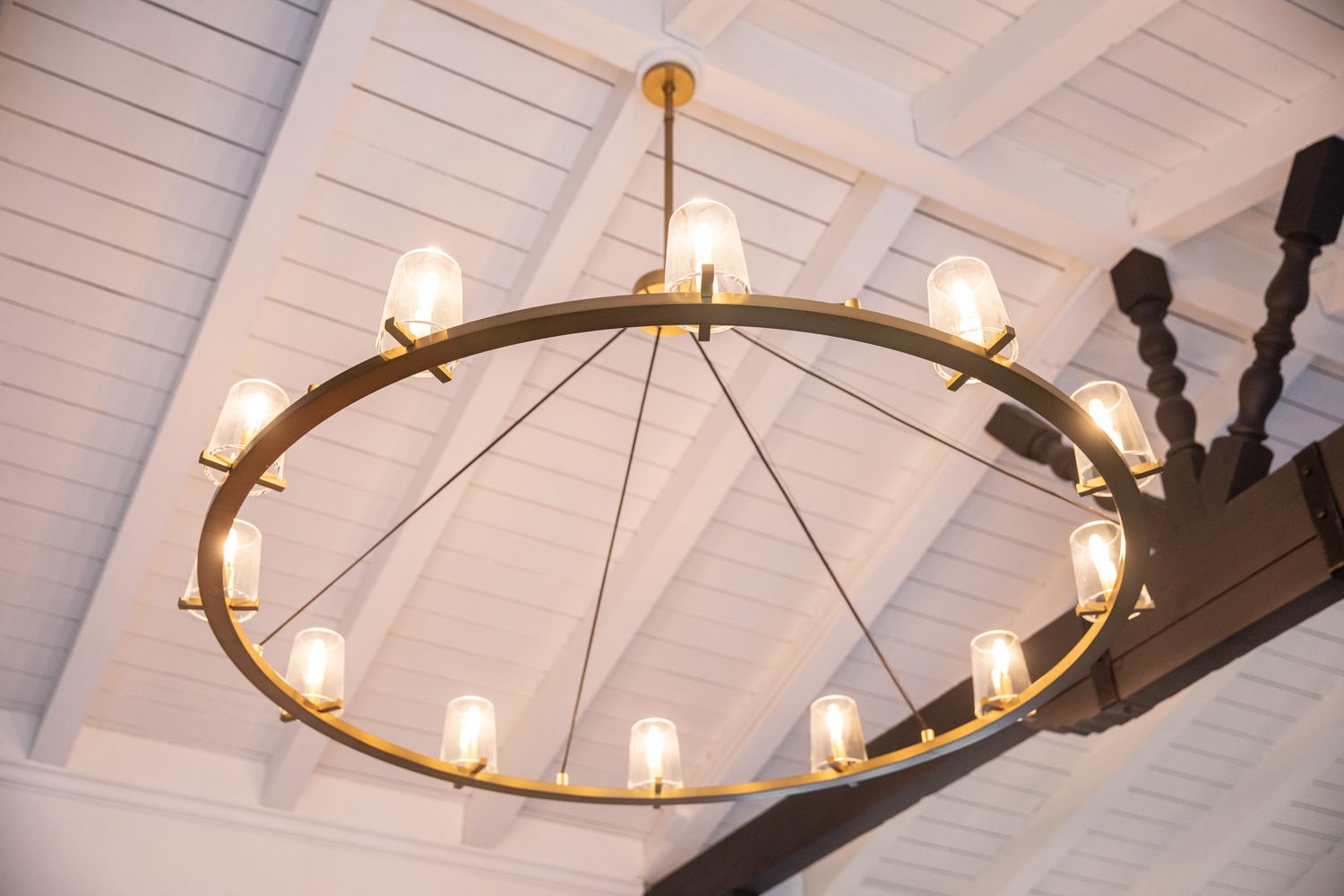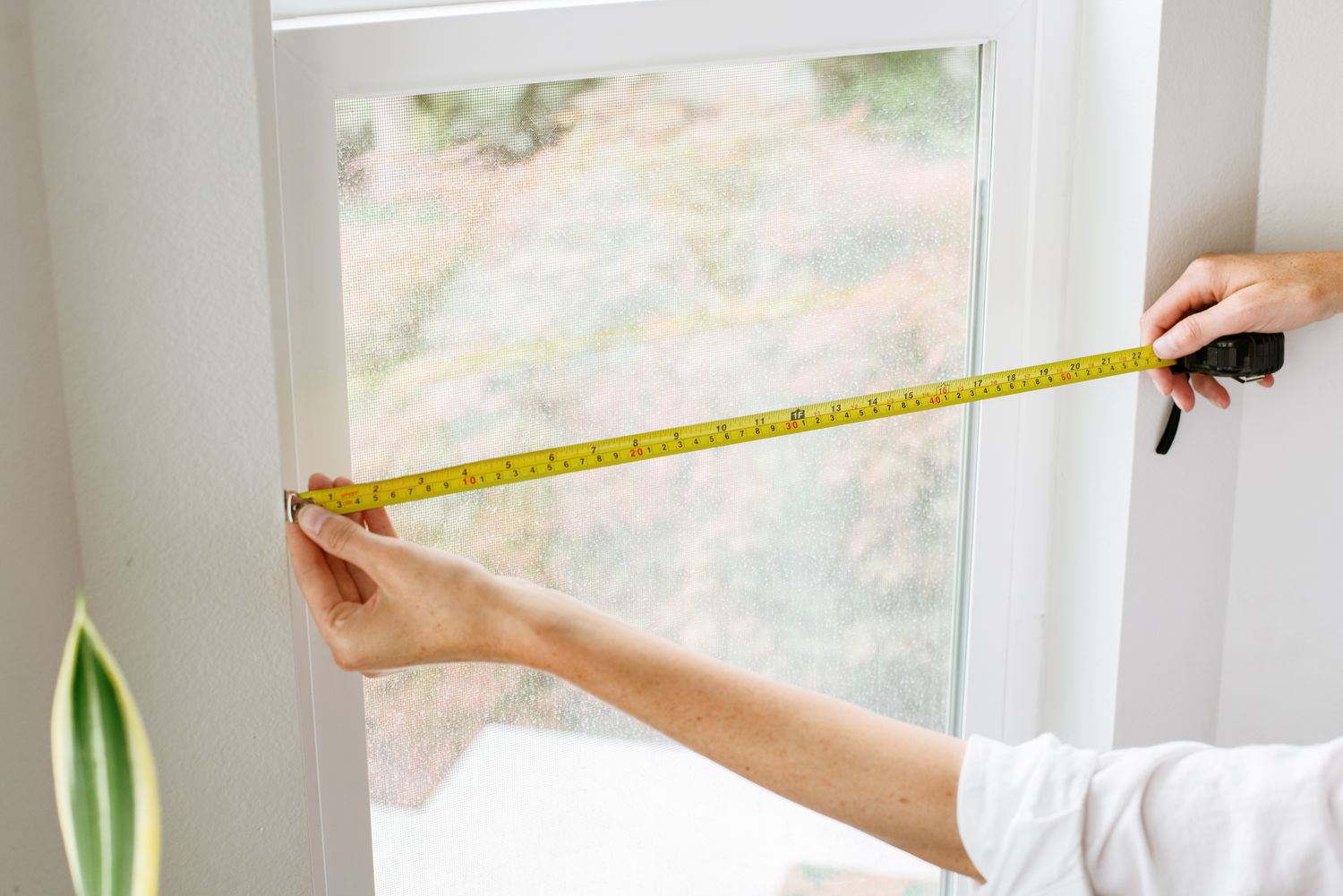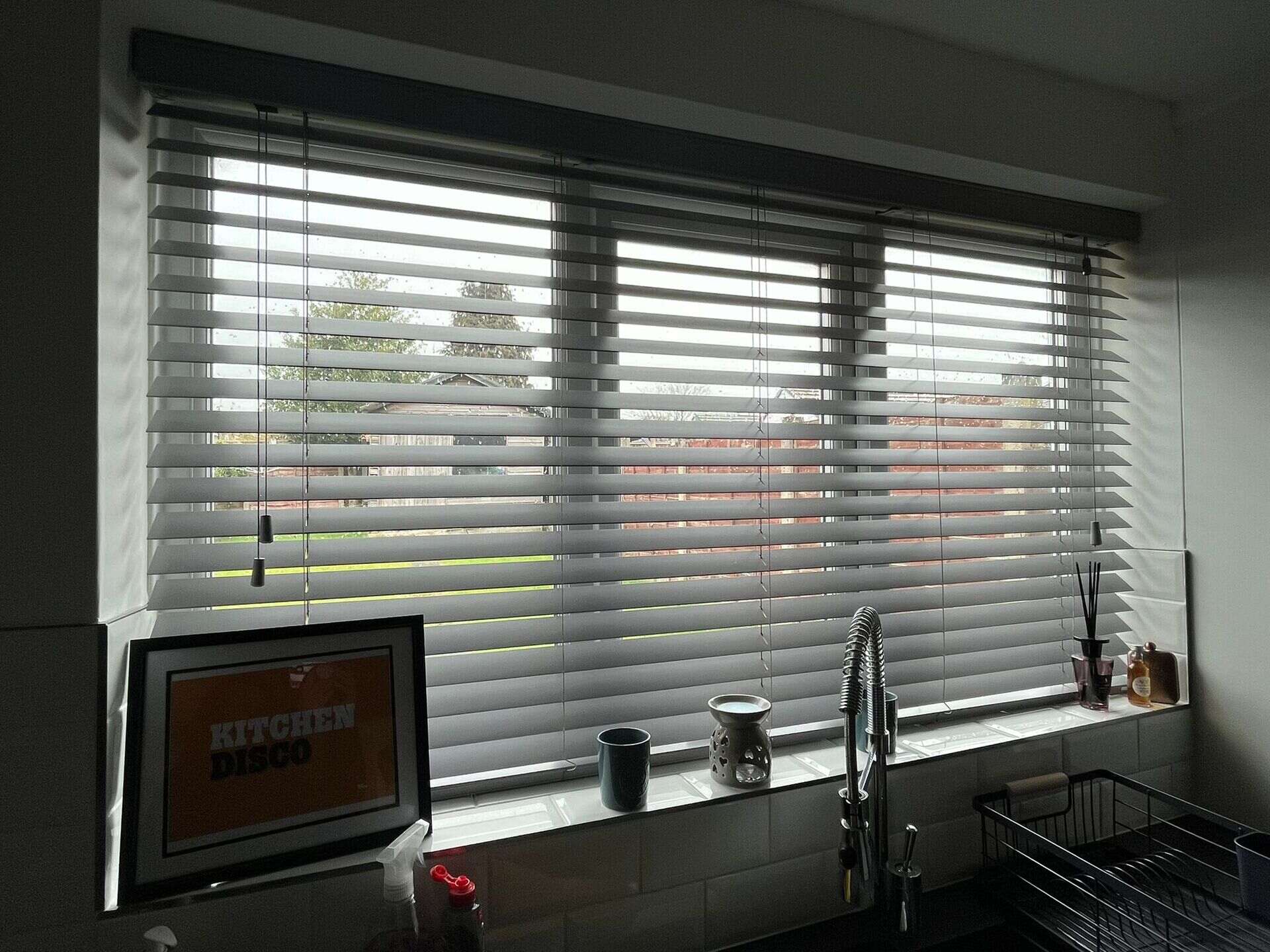

Articles
Where To Hang Blinds In Deep Window
Modified: May 6, 2024
Looking for tips on where to hang blinds in deep windows? Read our articles for expert advice and guidance, ensuring your blinds perfectly complement your deep window frames.
(Many of the links in this article redirect to a specific reviewed product. Your purchase of these products through affiliate links helps to generate commission for Storables.com, at no extra cost. Learn more)
Introduction
Window blinds are not just a practical addition to any home or office space, but they also serve as a stylish element that can elevate the overall aesthetic appeal. When it comes to hanging blinds in deep windows, it’s important to consider several factors to ensure a seamless and visually pleasing installation. In this article, we will explore the key factors to consider before hanging blinds, determine the correct height for installation, discuss optimal positioning within deep windows, and provide tips for the installation process as well as maintenance and cleaning.
Before diving into the specifics, it’s worth noting that deep windows refer to windows with a significant depth, usually larger than standard window frames. These windows offer more versatility for hanging blinds, as there is ample space to accommodate various types and sizes of blinds.
Now let’s delve into the various factors that need to be considered before hanging blinds in deep windows.
Key Takeaways:
- Elevate your space by carefully considering window type, light control, decor, functionality, and mounting options when hanging blinds in deep windows for a seamless and stylish installation.
- Achieve a balanced and visually pleasing look by determining the optimal height, balanced positioning, and following a secure installation process, ensuring beautiful and functional blinds for your deep windows.
Read more: How To Hang Vertical Window Blinds
Factors to Consider Before Hanging Blinds
Before starting the process of hanging blinds in deep windows, it’s important to take into account a few key factors to ensure a successful installation. These factors can impact both the functionality and the overall aesthetic of your blinds. Let’s explore them in detail:
1. Window Type
The type of window you are working with will play a role in determining the most suitable blinds. Deep windows can vary in shape and style, including casement windows, bay windows, or even large picture windows. Consider the specific characteristics of your window to select blinds that will fit properly and complement the window design.
2. Light Control and Privacy
Consider the level of light control and privacy you desire in the space where the blinds will be installed. Deep windows can accommodate different types of blinds that offer varying levels of light filtering or blocking. Decide whether you prefer blackout blinds for complete privacy or sheer blinds for diffused natural light.
3. Decor and Style
Blinds can be used to enhance the overall decor and style of a room, so it’s essential to consider the existing interior design. Take into account the color scheme, pattern, or texture of the blinds and how they will complement or harmonize with the surrounding elements, such as furniture, walls, or flooring.
Read more: What Is Window Blinds
4. Functionality
Think about how you want the blinds to function. Do you prefer blinds that can be adjusted to allow light to enter the room while maintaining privacy, or do you want blinds that can be completely raised or lowered? Deep windows offer more flexibility in terms of choosing blinds with different operating mechanisms, such as corded, cordless or motorized options.
5. Mounting Options
Consider the mounting options available for your deep windows. Depending on the window type and frame construction, you may have the option to mount the blinds inside the window recess or on the wall above the window. Each mounting option offers a different aesthetic and functionality, so choose the one that best suits your needs and preferences.
By considering these factors before hanging blinds in deep windows, you can ensure that your chosen blinds not only fit properly but also enhance the functionality and style of the space. Once you have determined your requirements, it’s time to move on to the next step – determining the correct height for installation.
Determining the Correct Height
When it comes to hanging blinds in deep windows, determining the correct height is crucial for both aesthetic appeal and functionality. The height at which you install your blinds can greatly impact how they look and how well they serve their purpose. Here are some considerations to help you determine the correct height for your blinds:
1. Window Functionality
Consider how you want the window to function when determining the height for hanging blinds. If you want the ability to fully open the window without obstruction, you will need to ensure that the blinds do not hang too low and interfere with the window’s operation.
Read more: How To Hang Paper Blinds
2. Window Frame and Trim
Take into account the depth of the window frame and any decorative window trim when deciding the height for hanging blinds. You may want to mount the blinds inside the frame for a neat and streamlined look, or opt to mount them above the frame to create an illusion of larger window size. Measure the depth of the window frame to determine the amount of space available for blind installation.
3. Privacy and Light Control
Consider the desired level of privacy and light control when determining the height for hanging blinds. If you want to maximize privacy, it may be preferable to install the blinds slightly higher to ensure that they cover the entire window. On the other hand, if you want to allow more natural light to enter the room, you may choose to hang the blinds lower, leaving some space at the top for light to filter through.
4. Personal Preference
Ultimately, the correct height for hanging blinds in deep windows will also depend on personal preference. Some individuals may prefer the blinds to hang near the top of the window for a sleek and modern look, while others may prefer them to hang lower for a more traditional or cozy feel. Consider your own style and aesthetic preferences when making this decision.
It’s important to note that there is no one-size-fits-all answer to determining the correct height for hanging blinds in deep windows. Each window and space will have its unique considerations. Take measurements, consider functionality, and think about your desired outcome to ensure that the blinds are hung at the optimal height.
Once you have determined the correct height for your blinds, you can move on to the next step – positioning the blinds within the deep windows.
Positioning the Blinds within Deep Windows
When it comes to hanging blinds in deep windows, the positioning plays a crucial role in achieving a balanced and visually appealing look. The way you position the blinds within the window frame can impact both the functionality and the overall aesthetic of the blinds. Here are some tips to help you position the blinds within your deep windows:
Read more: How To Hang Vinyl Blinds
1. Inside Mount or Outside Mount
First, decide whether you want to mount the blinds inside or outside the window frame. Inside mounting provides a clean and seamless look, with the blinds fitting within the window recess. On the other hand, outside mounting allows for more coverage and can create the illusion of larger windows. Consider the depth of your deep window and the desired aesthetic before deciding on the mounting option.
2. Allowance for Frame and Hardware
If you opt for inside mounting, consider the size of the window frame and any existing hardware or protrusions. Measure the width and height of the window frame accurately to ensure that the blinds fit properly and do not obstruct the window’s functionality. If there are any hardware components, such as handles or latches, make sure to account for their positioning.
3. Balanced Positioning
When positioning the blinds within the deep windows, aim for a balanced look. Make sure that the blinds are centered within the window frame and are hanging at an equal distance from both sides. This will create a symmetrical appearance and ensure that the blinds operate smoothly.
4. Bottom Clearance
Consider the desired bottom clearance for the blinds. The bottom of the blinds should be positioned above any furniture or window sills to ensure that they can open and close without obstruction. Leave a few inches of clearance to allow for smooth operation and prevent the blinds from brushing against any surface.
Read more: Which Window Blinds Are The Best
5. Tilt Control Accessibility
If your blinds have tilt control, whether it’s a wand or a cord, ensure that it is easily accessible and functional. Position the blinds in a way that allows you to reach the tilt control easily and adjust the angle of the blinds without any difficulty. This will make it convenient for you to control the amount of light and privacy you desire.
By following these positioning tips, you can ensure that the blinds are installed in a way that maximizes functionality and enhances the overall aesthetic of your deep windows. Once you have determined the correct positioning, you can move on to the next step – the installation process for hanging blinds in deep windows.
Installation Process for Hanging Blinds in Deep Windows
Installing blinds in deep windows may require some additional steps and considerations compared to standard window installations. Follow these steps to ensure a successful and secure installation:
1. Gather the Necessary Tools
Before you begin, gather the tools you will need for the installation. These may include a drill, appropriate screws or brackets, a measuring tape, a level, and a pencil. Having all the necessary tools ready will make the installation process smoother.
2. Measure and Mark
Measure the width and height of the deep window to determine the dimensions for your blinds. Use a measuring tape to ensure accuracy. Mark the desired position for the brackets or mounting hardware inside or outside the window frame, depending on your chosen mounting option.
Read more: How To Remove Window Blinds
3. Pre-Drilling
If you are mounting the blinds inside the window frame, you may need to pre-drill pilot holes for the brackets. Use a drill bit slightly smaller than the size of the screws or anchors to ensure a snug fit. The pre-drilled holes will make it easier to install the brackets securely.
4. Secure the Brackets or Mounting Hardware
Using the appropriate screws or anchors, secure the brackets or mounting hardware in the marked positions. Make sure they are level and aligned properly, using a level to ensure accuracy. If necessary, use drywall anchors or additional support for extra stability.
5. Attach the Blinds
Once the brackets or mounting hardware are securely in place, attach the blinds to the brackets. Depending on the type of blinds, this may involve sliding them into the brackets or clipping them onto the mounting hardware. Refer to the manufacturer’s instructions for specific guidance on how to attach the blinds.
6. Test for Smooth Operation
After the blinds are attached, test them for smooth operation. Open and close the blinds to ensure that they move freely and without any resistance. Adjust the tilt control, if applicable, to verify that it is working smoothly. Make any necessary adjustments to the installation or positioning of the blinds to achieve optimal functionality.
Read more: How To Close Window Blinds
7. Finishing Touches
Once the blinds are installed, take a step back and assess the overall appearance. Ensure that the blinds are straight, level, and centered within the deep window. Use a clean, damp cloth to wipe away any dirt or debris. Finally, remove any protective coverings or packaging from the blinds.
Following these steps will help you successfully install blinds in deep windows. Remember to consult the manufacturer’s instructions specific to your blinds, as installation methods may vary depending on the style and design. With proper installation, your blinds will not only provide privacy and light control but also enhance the beauty and functionality of your deep windows.
Maintenance and Cleaning Tips
Maintaining and cleaning your blinds regularly is essential to keep them looking their best and functioning smoothly. Deep windows can accumulate more dust and dirt, so it’s important to incorporate proper maintenance into your routine. Here are some tips to help you effectively clean and maintain your blinds:
1. Regular Dusting
Dust your blinds regularly to prevent the buildup of dirt and allergens. You can use a feather duster, a microfiber cloth, or a vacuum cleaner with a brush attachment. Gently run your cleaning tool along the slats, starting from the top and working your way down. Be thorough in your dusting to ensure all surfaces are clean.
2. Spot Cleaning
If you notice any stains or spots on your blinds, spot cleaning is the way to go. Use a mild detergent or a specialized blind cleaner and a soft cloth to gently clean the affected areas. Avoid using harsh chemicals or abrasive materials as they can damage the blinds. Test the cleaning solution on a small, inconspicuous area before applying it to the entire blind.
Read more: Where To Buy Deep Freezer
3. Deep Cleaning
For a more thorough cleaning, you may need to remove the blinds from the window. Check the manufacturer’s instructions on how to safely remove the blinds for deep cleaning. You can soak the blinds in warm water with a mild detergent, gently scrubbing them with a soft brush or sponge. Rinse them with clean water and allow them to dry completely before rehanging them.
4. Addressing Mold and Mildew
If you notice mold or mildew on your blinds, it’s crucial to address the issue promptly. Mix equal parts water and vinegar and use a sponge or cloth to gently wipe away the mold or mildew. Allow the blinds to dry completely, and ensure the area is well-ventilated to prevent further growth. Proper ventilation and reducing excess moisture in the space can help prevent mold and mildew from forming.
5. Ongoing Maintenance
In addition to regular cleaning, there are a few ongoing maintenance practices to keep in mind. Avoid pulling on the cords or operating mechanisms forcefully, as this can lead to damage. Inspect the blinds periodically for any signs of wear or damage, such as broken slats or loose hardware, and address them promptly to prevent further issues. Regularly lubricate any moving parts, such as hinges or pulleys, to ensure smooth operation.
6. Professional Cleaning
If you find that your blinds require a deeper cleaning or if you’re unsure about how to clean them properly, consider hiring professional blind cleaners. They have the expertise and specialized equipment to clean your blinds effectively, ensuring they look their best while maintaining their integrity.
By following these maintenance and cleaning tips, you can keep your blinds in excellent condition and prolong their lifespan. Regular upkeep will ensure that your deep windows remain visually appealing and that your blinds continue to provide privacy, light control, and functionality.
Read more: How Deep Should A Window Seat Be
Conclusion
Hanging blinds in deep windows can significantly enhance the functionality and aesthetic appeal of your space. By considering factors such as window type, light control, decor, functionality, and mounting options, you can ensure that the blinds you choose are the perfect fit for your deep windows.
Determining the correct height for your blinds is crucial in achieving a balanced and visually pleasing look. Considering window functionality, frame and trim, privacy and light control, and personal preference will help you determine the optimal height for your blinds.
Positioning the blinds within deep windows is equally important. Whether you choose an inside or outside mount, ensuring a balanced position, allowing for frame and hardware, and considering bottom clearance and tilt control accessibility will result in a seamless and functional installation.
Once you have determined the correct height and position, following the installation process will ensure a secure and successful hanging. By gathering the necessary tools, measuring and marking, pre-drilling if needed, securing the brackets or mounting hardware, attaching the blinds, testing for smooth operation, and adding the finishing touches, you can enjoy beautiful and functional blinds in your deep windows.
Maintaining and cleaning your blinds regularly will keep them looking their best. Regular dusting, spot cleaning, deep cleaning when necessary, addressing mold and mildew promptly, ongoing maintenance, and considering professional cleaning will ensure that your blinds remain in excellent condition and continue to enhance your deep windows for years to come.
In conclusion, hanging blinds in deep windows requires careful consideration of factors such as window type, height, position, and maintenance. By taking the time to research and make informed decisions, you can transform your deep windows into functional and stylish elements of your space. Enjoy the benefits of privacy, light control, and an enhanced aesthetic with the perfect blinds for your deep windows.
After mastering blind installation in deep windows, why not tackle more home projects yourself? Diving into our engaging guide on DIY home improvement offers practical tips and inspiring ideas that can transform any living space. Whether you're updating a room or fixing minor issues, our guide walks you through each project with easy-to-follow steps. Ready to roll up your sleeves and enhance your home on your own terms? Check out our comprehensive DIY guide and start transforming your space today.
Frequently Asked Questions about Where To Hang Blinds In Deep Window
Was this page helpful?
At Storables.com, we guarantee accurate and reliable information. Our content, validated by Expert Board Contributors, is crafted following stringent Editorial Policies. We're committed to providing you with well-researched, expert-backed insights for all your informational needs.

